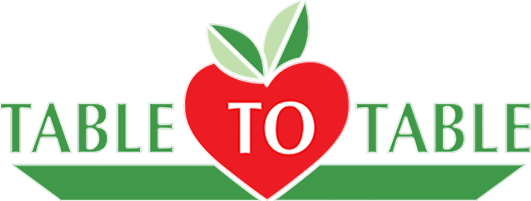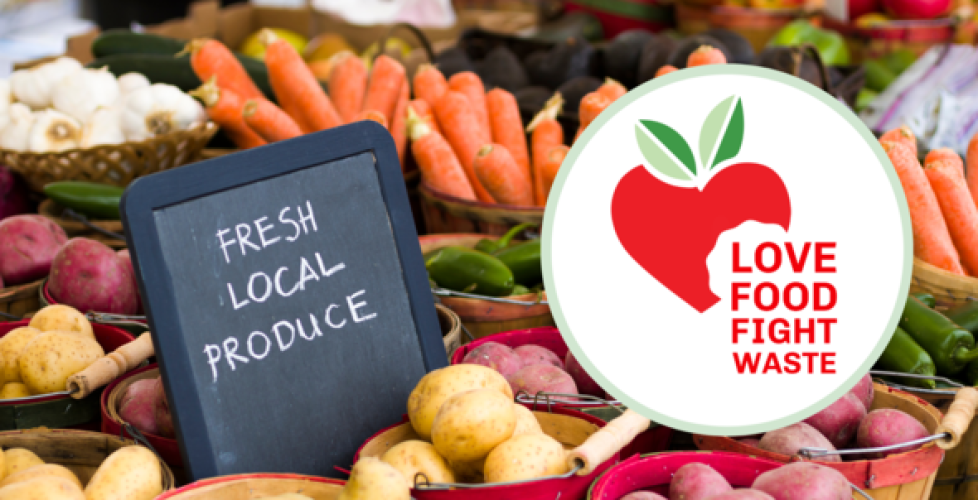Why local food matters
Did that apple you’re eating come from five miles down the road, or is it more well-traveled than you are? Reduce your carbon footprint and benefit your health by choosing local food.
Monthly Topic Overview
Why does choosing local food matter?
“Choosing local whenever in season and when possible, as often as possible, strengthens a community-based food system,” says Michelle Kenyon, director of Field to Family, an Iowa City-based nonprofit that works to create a healthy and sustainable local food system. “Community food systems enhance the health of our economy, environment, and our population.”
Let’s go in-depth with benefits:
- Choosing local food reduces transportation-associated greenhouse gas emissions.
- Significant greenhouse gas emissions are associated with food logistics. Most conventional food travels over 1,000 miles to get to us, the consumers. (To put that into perspective, that’s like driving to Boston from Iowa City.) Almost one-fifth of carbon emissions in the food system are from burning fossil fuels to transport (and refrigerate) food via trucks, trains, boats, etc. With a greater distance to travel, there’s also a higher chance of food spoiling or being damaged on its journey, leading to more food waste.
- Choosing local food offers fresher, more nutritious options that benefit your health.
- Food sourced locally spends much less time in transit from the farm to your plate, which means it loses fewer nutrients before you eat it. Plus, it’s fresher and tastes better. Eating local encourages you to eat with the seasons, learning when certain types of produce are at their peak for quality and taste.
- Plus, many local farmers take environmental health into consideration when growing food, using sustainable practices to increase biodiversity and protect pollinators.
- “‘Know your farmer, know your food’ is absolutely true, as local farmers are transparent when it comes to their growing philosophies,” Kenyon says. “Those who implement growing practices that are committed to improving soil, water, and air health are upfront about it.”
- Choosing local food strengthens our food system.
- When you purchase local food, you’re supporting local farming, processing, and distribution jobs, keeping your dollars in our local economy. The more of our local dollars that go into local food, the more local food is grown in our region. Those dollars invest in the future of our food supply.
- In addition to food, agritourism supports our community’s economy. Participating in local activities like farm to table dinners, goat yoga, and apple picking ultimately support folks living and working in our communities.
How can I access local food in Johnson County?
Now that you understand the difference that eating local can make, let’s delve into how you can access local foods in Johnson County. Our community is host to a lot of quality local food options, including these listed:
- Farmers Markets offer seasonal local foods and goods sold by our neighbors. Markets typically run May-October. Check out this list of Johnson County Farmers Markets.
- If you’re looking to order local foods online, Field to Family offers an online farmers market beginning Earth Week, April 17.
- Many local farms offer community-supported agriculture (CSA) shares for purchase. Vegetable shares are seasonal and subscription-based. Find a local CSA with this guide to Iowa CSA farms.
- Want to grow your own produce? You can’t get more local than that!
- Try your hand at gardening in your backyard; or, if your space is limited, container gardens kept on patios, steps, or in windows are excellent for growing your own tomatoes, peppers, eggplants, lettuces, strawberries, and herbs.
- Iowa City community garden plots are another great option for planting your own garden or gardening with friends.
- Plus: share your bounty and grow an extra row to donate to Table to Table! Drop your donations off at the Table to Table office in Pepperwood Plaza, 1049 US-6 E, Iowa City on weekdays or Saturday mornings.
- Shop local at the grocery store. Wherever you shop, check labels when you’re shopping to see where the food you’re planning to purchase came from.
- Free produce stands are hosted throughout the growing season at locations in Iowa City, Coralville, and North Liberty, stocked with fresh, local produce, free to all. Keep an eye on social media for Table to Table, CommUnity, Coralville Community Pantry, and North Liberty Community Pantry later this spring for details.
Activity
- Learn about how you can access local food in our area with Field to Family’s resources.
- Next time you go to the grocery store, pick out three produce items and check the labels. Where are the items from? Are they local or from a faraway place?
Resources
- Learn more about Field to Family’s “Farm to School” Month, educating the next generation about local agriculture (video).
- Watch “Dirty Food Chain: Why You Should Know Where Your Food Comes From” (video)
- Healthline lists seven great reasons to eat local foods.
- Check out Field to Family’s Local Food Explorer.
- Field to Family explains: “Where does your food come from?”
- Ecowatch lists 10 reasons to eat local.
- Nature discusses CO2 emissions from transporting food.
- Reference this Iowa Fruit and Vegetable Harvest Calendar to learn when your favorite produce is at its peak.
Read more Love Food, Fight Waste topics, brought to you by Table to Table and the City of Iowa City.

